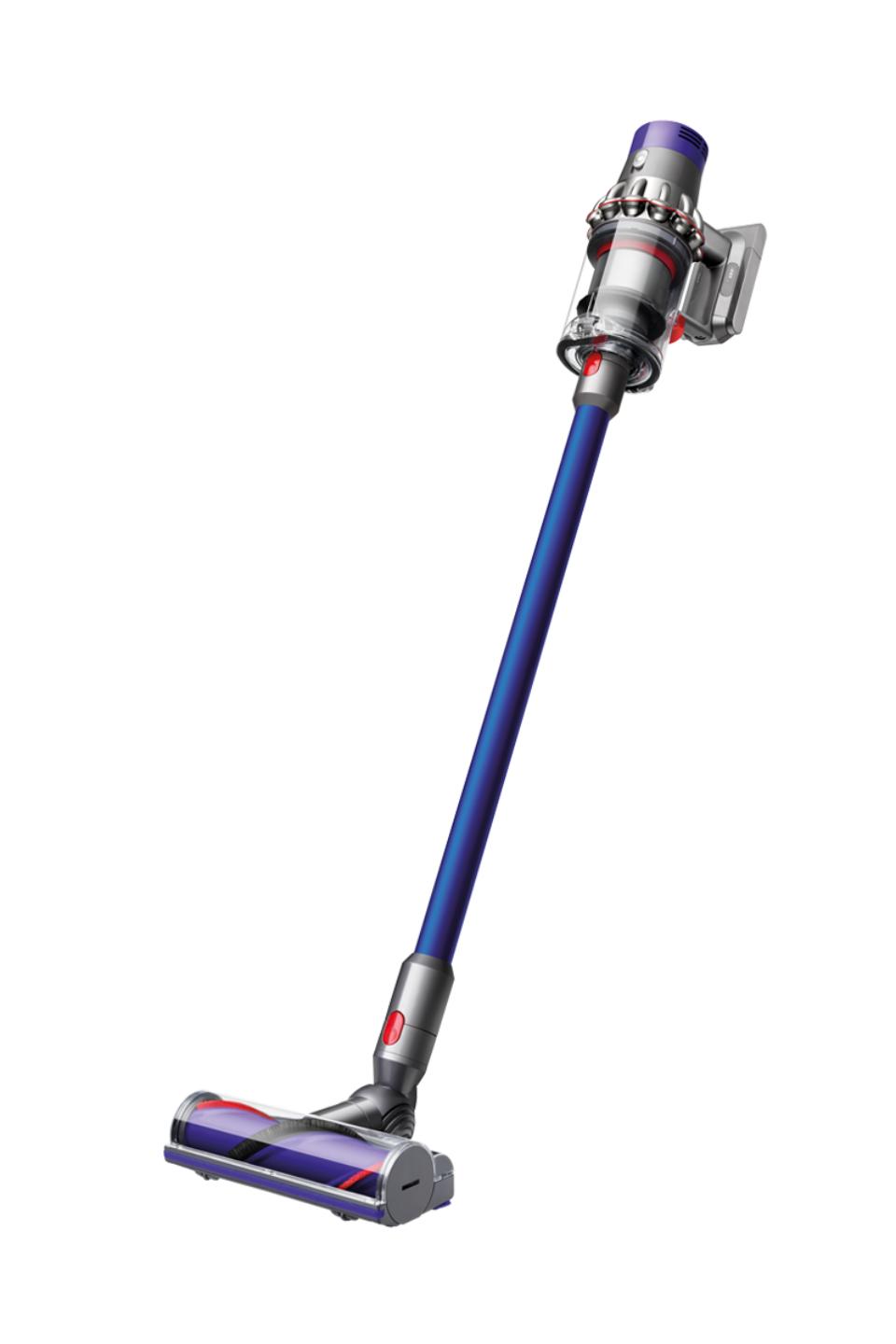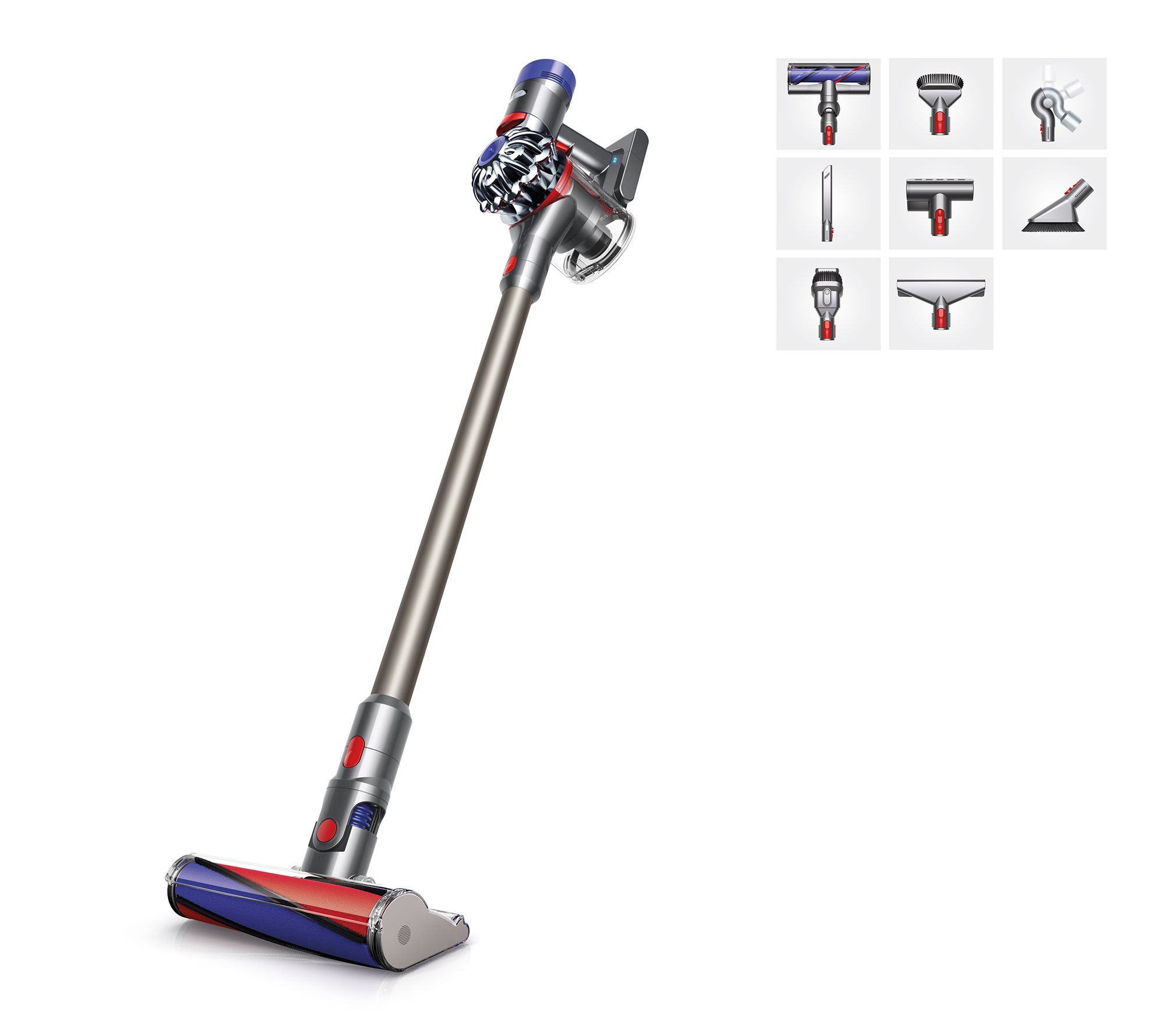Dyson Cyclone V10 Allergy Cordless Vacuum Cleaner | Dyson Cyclone V10 Allergy | Dyson
Cordless. Versatile. Engineered for everyday, quick cleans. Advanced, whole-machine filtration traps 99.99% of fine dust as small as 0.3 microns.
Powerful direct drive cleaner head removes ground-in dirt from carpets.
Cyclone V10 Allergy key features
Quickly transforms to a handheld
Changes to a handheld vacuum cleaner and back again in just one click.
‘Point and shoot’ hygienic bin emptying
The ‘point and shoot’ mechanism hygienically ejects dust and debris in one action, so there’s no need to touch the dirt.
Drop-in docking
The Dyson Cyclone V10™ Allergy vacuum drops into the wall-mounted dock to recharge it and tidily store tools, so it’s ready to grab and go.
Three power modes
The right power when you need it. Three modes to choose from to suit any task on any floor type.
Whole-machine filtration
The Dyson Cyclone V10™ Allergy vacuum captures allergens and expels cleaner air than the air you breathe.
Up to 60 minutes of run time*
Strong suction to clean anywhere.
Cyclone V10 Allergy key technologies
Powered by the Dyson digital motor V10
Even stronger suction to pick up more dust and debris.⁺⁺
14 cyclones
14 cylcones generate forces of more than 79,000g to fling microscopic particles, such as pollen and bacteria, into the bin.
Fade-free power
The seven-cell, nickel-cobalt-aluminum battery has fade-free power to clean here, there, and everywhere around your home.
Whole-system filtration
The fully-sealed filtration system traps 99.99% of particles as small as 0.3 microns and expels cleaner air.‡
Acoustically engineered
Designed to keep sound levels down by absorbing vibrations.
In-line configuration
The motor, bin, and cyclone are aligned, so air is drawn into the cyclones in a straight line, creating 20% more suction power than the Dyson V8™ vacuum cleaner.
Additional information
| Height | 48.8 in |
|---|---|
| Length | 10.19 in |
| Width | 9.84 in |
| Weight | 5.88 lb |






Reviews
There are no reviews yet.